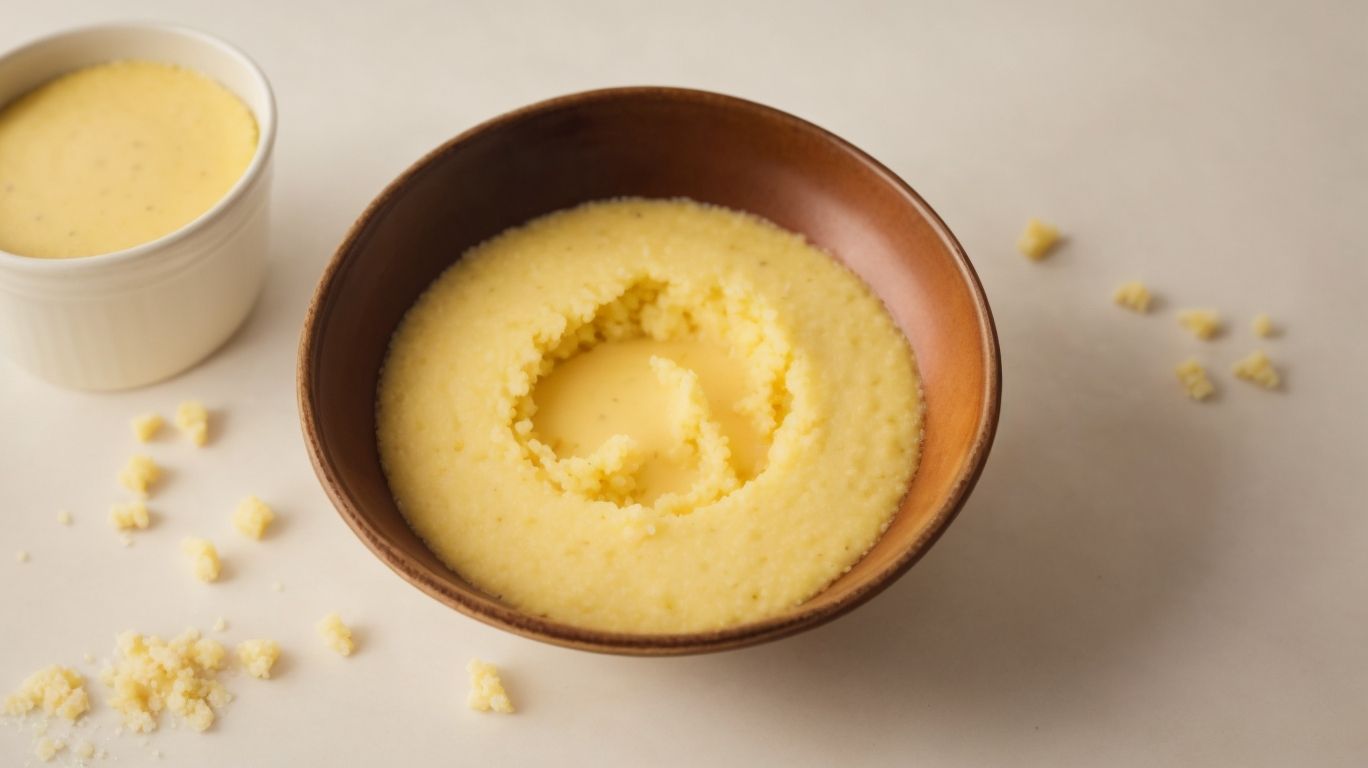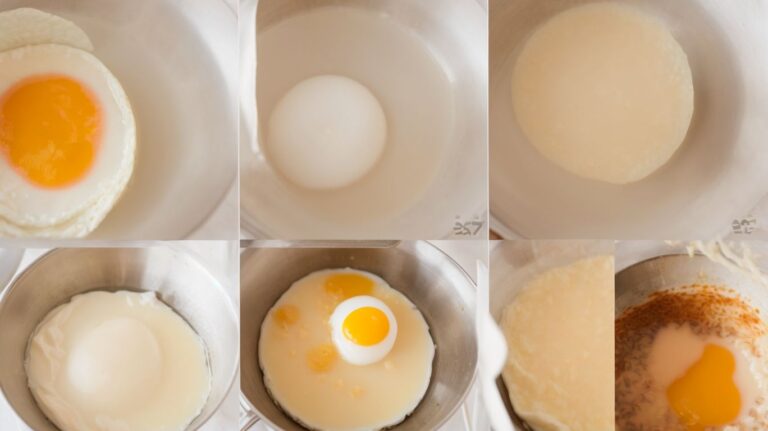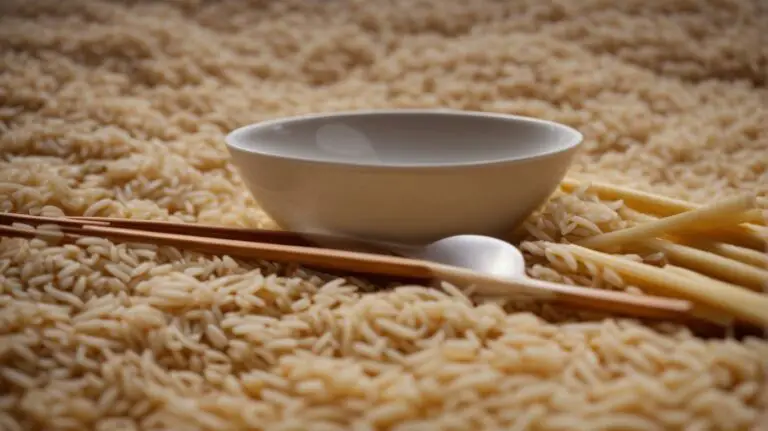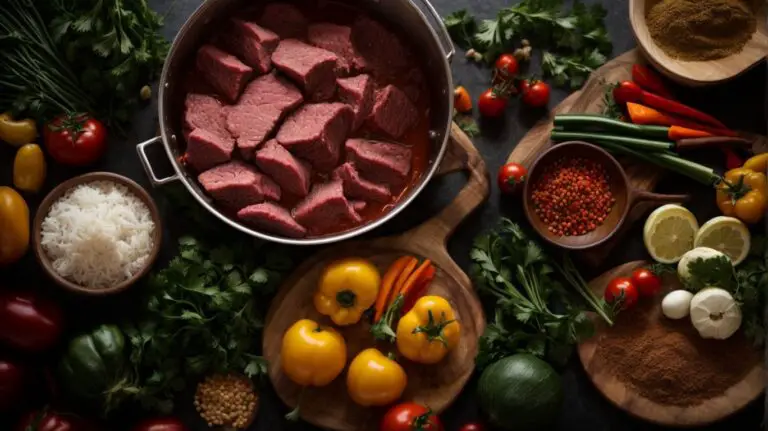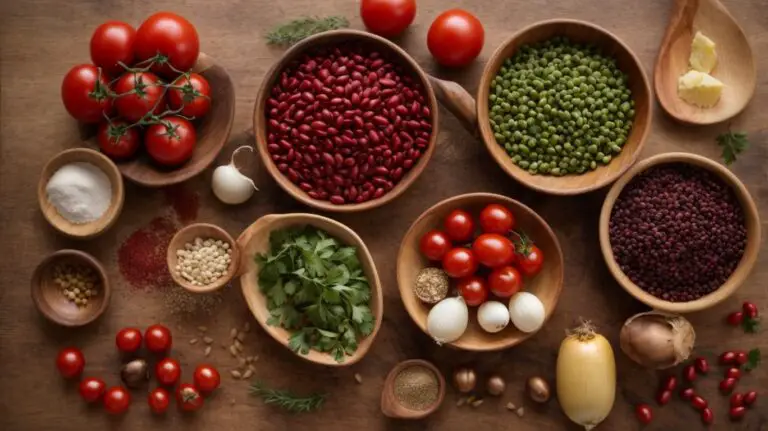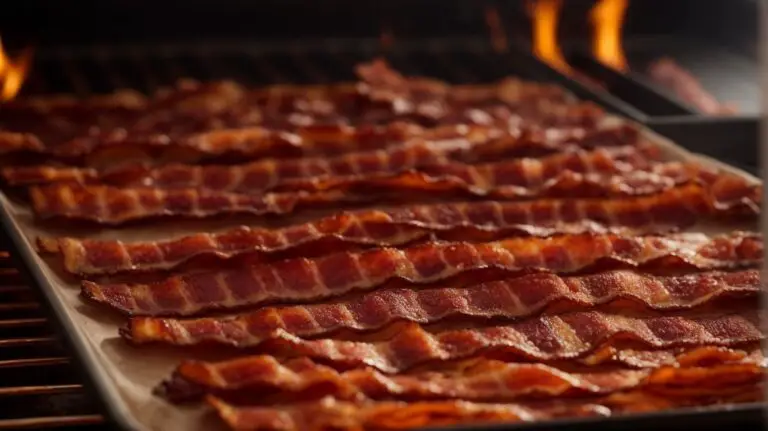How to Cook Cornmeal Into Grits?
If you’ve ever wondered about the differences between cornmeal and grits, or how to cook cornmeal into a delicious bowl of creamy grits, you’ve come to the right place.
In this article, we will explore the nuances of cornmeal, the step-by-step process of cooking it into grits, and some tips for achieving the perfect texture and flavor.
So grab your ingredients and let’s get cooking!
Key Takeaways:
What is Cornmeal?
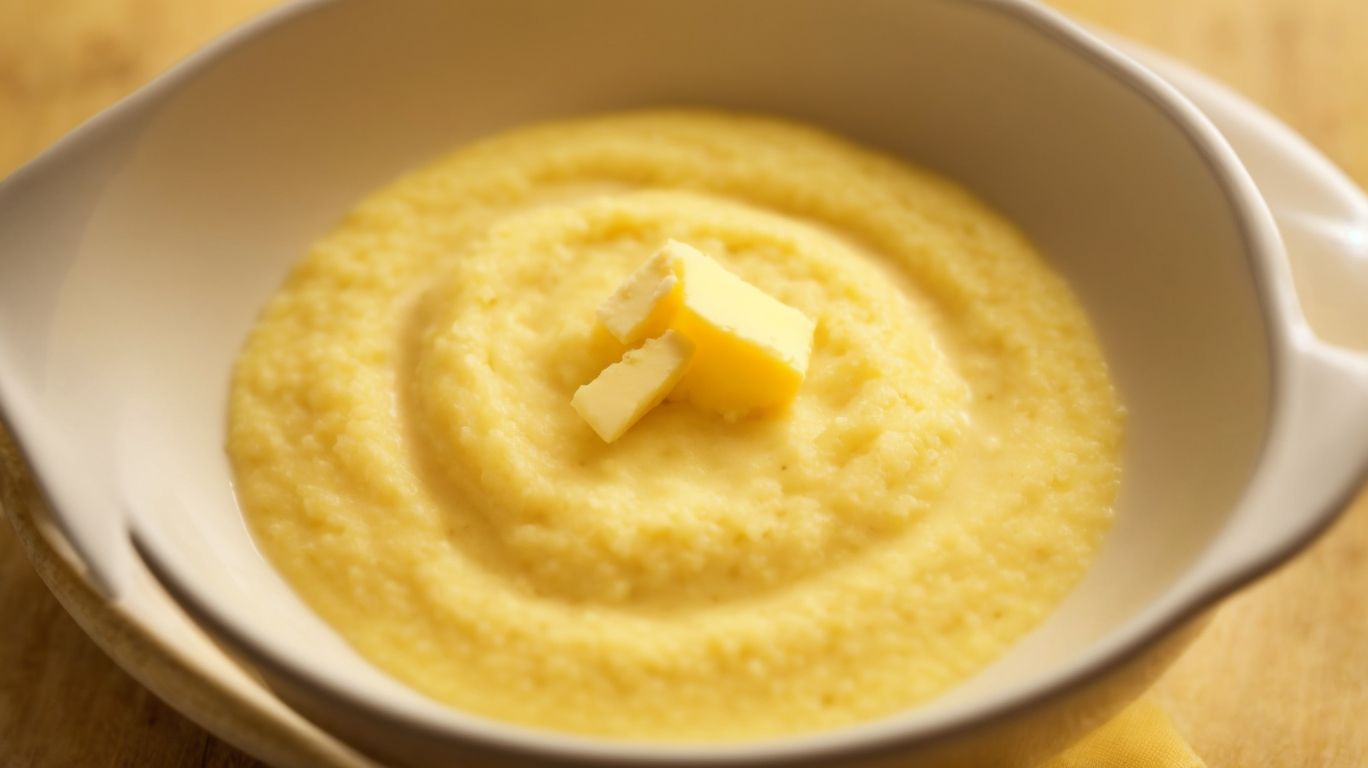
Credits: Poormet.Com – Steven White
Cornmeal is a staple ingredient in various culinary traditions, known for its versatility and distinctive flavor profile.
Its origins can be traced back to Indigenous American cultures, where corn was a dietary staple. Today, cornmeal plays a significant role in Southern cuisine, particularly in dishes like grits—a creamy and comforting cornmeal porridge that can be enjoyed for breakfast or as a side dish. In Italian cuisine, cornmeal is used to make polenta, a versatile dish that can be served soft, creamy, or even grilled and topped with various ingredients. Cornmeal is a key ingredient in baking, adding a unique texture and flavor to cornbread, muffins, and cakes.
The Differences Between Cornmeal and Grits
Cornmeal and grits share a similar base ingredient but differ in terms of texture and flavor.
Regarding texture, cornmeal tends to be finer and smoother compared to the coarser, slightly grainy texture of grits. This texture difference affects their culinary uses, with cornmeal being commonly used in baking for items such as cornbread or as a coating for fried foods, while grits are often cooked into a comforting porridge-like dish.
In terms of flavor, cornmeal offers a slightly sweet and nutty taste, while grits have a more pronounced corn flavor and a creamy consistency when cooked. Both versatile ingredients, cornmeal and grits can add unique textures and flavors to a variety of dishes.
How to Cook Cornmeal into Grits
Cooking cornmeal into grits requires a few simple steps to achieve a creamy and flavorful dish.
To begin, bring a pot of water to a boil over medium heat. Once the water is boiling, gradually whisk in the cornmeal to prevent clumping. For extra creaminess, replace some of the water with milk during this step. Stir the mixture constantly to ensure the grits cook evenly and don’t stick to the bottom of the pot. After about 15-20 minutes of simmering, the grits should have a smooth consistency. To enhance the flavor, add a generous knob of butter and season with salt and pepper to your liking. Serve the creamy grits hot as a delicious side dish or breakfast meal!
Step 1: Gather Ingredients and Equipment
Before starting the cooking process, gather all the necessary ingredients and equipment to prepare the grits.
To make delicious grits from cornmeal, you will need the following key ingredients: cornmeal, water, salt, and optionally butter or milk for added flavor. Essential tools include a saucepan, whisk, measuring cups, and a stove.
- Step 1: Boil water in a saucepan and add a pinch of salt.
- Step 2: Slowly whisk in the cornmeal, stirring continuously to avoid lumps.
- Step 3: Reduce heat and let the mixture simmer, stirring occasionally until it thickens to the desired consistency.
Step 2: Boil Water and Add Salt
Begin the grits preparation by boiling water and adding salt to enhance the flavor profile.
When boiling the water, it’s important to use a pot with a tight-fitting lid to ensure efficient heat retention. Allow the water to come to a rapid boil over high heat, then sprinkle in the salt to season the water. The salt not only enhances the overall taste of the grits but also helps to elevate the natural flavors of the dish. Stir the water gently to dissolve the salt completely before adding the grits to the pot.
Step 3: Slowly Add Cornmeal and Stir
Gradually add cornmeal to the boiling water while stirring continuously to prevent clumping and ensure a smooth texture.
This technique of slow addition and consistent stirring is vital in achieving a silk-like texture in your cornmeal. By slowly incorporating the cornmeal, you allow it to evenly disperse and absorb the liquid without forming lumps.
This process not only ensures a deliciously creamy consistency but also helps in avoiding any unwanted clumps that can ruin the overall dish. The gentle stirring action helps distribute the cornmeal particles evenly and prevents them from sticking together, resulting in a perfectly smooth and indulgent cornmeal creation.
Step 4: Cook and Stir Until Grits Thicken
Continue to cook and stir the grits until they reach the desired thickness and develop a creamy consistency.
To achieve the ideal texture and creaminess, it is crucial to maintain a steady cooking process. Stirring the grits continuously prevents them from clumping and ensures an even thickening throughout. As the grits cook, keep a close eye on the consistency – it should be smooth and creamy, without any lumps. Adjust the heat as needed to control the cooking process, and remember that patience is key. With consistent stirring and monitoring, you’ll soon achieve perfectly cooked and creamy grits that will delight your taste buds.
Step 5: Add Butter and Cheese for Creamy Grits
Enhance the richness and flavor of the grits by adding butter and cheese for a creamy finish.
As the butter melts into the steaming grits, it infuses the dish with a subtle richness that complements the hearty flavor of the corn. The cheese, when sprinkled in, adds a velvety texture and a savory depth that brings the entire dish together. Stirring gently, you’ll see the creamy consistency develop, creating a luxurious base for a delectable meal.
These final steps unlock a symphony of flavors, with the butter enhancing the silkiness and the cheese adding a delightful sharpness to the dish. The result is a harmonious balance of creamy and savory notes that will have your taste buds singing with delight.
Step 6: Serve and Enjoy
Once the grits are cooked to perfection, serve them hot and enjoy this classic dish, perfect for breakfast or any meal.
When serving grits, consider adding a variety of toppings to enhance the flavors. Some popular choices include grated cheese, crispy bacon bits, sautéed vegetables, or a dollop of creamy butter. This versatile dish can be enjoyed not only in the morning but also as a fulfilling dinner option.
Tips for Perfect Grits
Achieving perfect grits involves using stone-ground cornmeal, a whisk for smooth texture, experimenting with herbs and spices for flavor, and trying out various toppings.
Stone-ground cornmeal is key to achieving grits with a rich, authentic flavor. The traditional method of grinding corn between stones preserves the natural oils and nutrients, resulting in a more robust taste compared to commercially processed cornmeal.
When preparing your grits, opt for a whisk over a spoon to achieve a smooth and creamy consistency. The whisk allows for better incorporation of the cornmeal, preventing clumps and ensuring a velvety texture.
Enhance the flavor profile of your grits by adding a sprinkle of fresh herbs such as thyme or chives, or a pinch of aromatic spices like smoked paprika or cayenne pepper. These additions can elevate the taste and introduce a delightful complexity to your dish.
For a creative twist, explore different toppings to customize your grits. From savory options like crispy bacon or sautéed mushrooms to sweet choices such as maple syrup or fresh berries, the possibilities are endless. Experimenting with toppings can add depth and variety to your grits, making each bite a delightful experience.
Use Stone-Ground Cornmeal
Opt for stone-ground cornmeal to elevate the texture and flavor of your grits, providing a more authentic and robust taste.
Stone-ground cornmeal, as its name suggests, is produced by grinding whole dried corn kernels between traditional stone mills, ensuring a coarser grind that retains more of the corn’s natural flavors and nutrients. This differs from industrial steel-ground varieties, which can lack the depth and character of stone-ground options. The result is grits with a delightful, slightly grainy texture that holds sauces and seasonings beautifully, allowing for a more intriguing and satisfying culinary experience. The process of stone grinding helps to preserve the corn’s inherent sweetness, translating into a richer and more nuanced flavor profile in your dishes.
Use a Whisk to Prevent Lumps
Employ a whisk when preparing grits to ensure a lump-free and smooth consistency, enhancing the overall texture of the dish.
Using a whisk while cooking grits is a tried and true technique cherished by seasoned chefs and home cooks alike. The whisk’s ability to swiftly blend ingredients prevents the formation of pesky lumps that can ruin the velvety texture of your dish. The swift motion of the whisk creates a smooth amalgamation of the grits and liquid, ensuring an even distribution of flavors and a pleasing mouthfeel. Whether you’re making traditional Southern grits or experimenting with gourmet variations, the whisk is your loyal companion in achieving that perfect consistency.
Add Flavor with Herbs and Spices
Experiment with adding a variety of herbs and spices to infuse your grits with unique and delicious flavors that suit your taste preferences.
Consider using cilantro for a fresh and zesty kick, or perhaps paprika for a subtle hint of smokiness. Basil can lend a sweet and aromatic touch while garlic powder adds a savory depth. For a spicy twist, try incorporating red pepper flakes or black pepper. The possibilities are endless, so don’t be afraid to experiment and find the perfect combination of herbs and spices that elevate your grits to a whole new level of flavor!
Experiment with Different Toppings
Explore a range of toppings to garnish your grits, from savory options like cheese and bacon to sweet additions like fruit and honey, adding a delightful twist to your dish.
For those inclined towards savory flavors, consider sprinkling your grits with crispy prosciutto and sautéed mushrooms for a gourmet touch. If sweetness is more to your liking, try drizzling maple syrup or caramelized bananas over your creamy grits. Don’t shy away from experimentation – perhaps a fusion of feta cheese and watermelon for a surprising blend of flavors. The beauty of grits lies in its versatility, allowing you to play with a myriad of ingredients to suit your palate. Embrace the concept of variety in your grits preparation, turning each meal into a unique culinary adventure.
Conclusion
Mastering the art of cooking cornmeal into creamy grits opens up a world of culinary possibilities, enriching your dining experiences with a touch of Southern comfort and rustic charm.
Starting with the simple combination of water, cornmeal, and salt, the recipe for traditional Southern grits involves a slow and patient cooking process that transforms the coarse texture of the cornmeal into a velvety, smooth porridge.
The key lies in the slow simmering and frequent stirring, coaxing out the natural flavors of the corn while thickening the mixture into a comforting dish that warms both body and soul.
Embraced for its humble roots and versatility, grits have become an essential part of Southern cuisine, reflecting the region’s agricultural history and cultural heritage.
Frequently Asked Questions
How to Cook Cornmeal Into Grits?
What is the best type of cornmeal to use for making grits?
Stone-ground cornmeal is the preferred type for making grits, as it retains more flavor and texture compared to other varieties.
How to Cook Cornmeal Into Grits?
What is the ratio of cornmeal to water when cooking grits?
The general ratio is 1 part cornmeal to 4 parts water, but this can vary depending on the desired consistency of your grits.
How to Cook Cornmeal Into Grits?
Can I make creamy grits without using dairy?
Yes, you can substitute dairy milk with almond milk or coconut milk for a creamy and dairy-free version of grits.
How to Cook Cornmeal Into Grits?
How long does it take to cook grits on the stovetop?
On average, it takes about 20-30 minutes to cook grits on the stovetop. The exact time may vary depending on the type of cornmeal used and the desired consistency.
How to Cook Cornmeal Into Grits?
Can I make grits in a slow cooker?
Yes, you can make grits in a slow cooker by using a ratio of 1 part cornmeal to 5 parts water and cooking on low for 6-8 hours.
How to Cook Cornmeal Into Grits?
Can I make savory grits instead of sweet?
Yes, you can add cheese, bacon, herbs, and other savory ingredients to make a delicious and savory version of grits.

